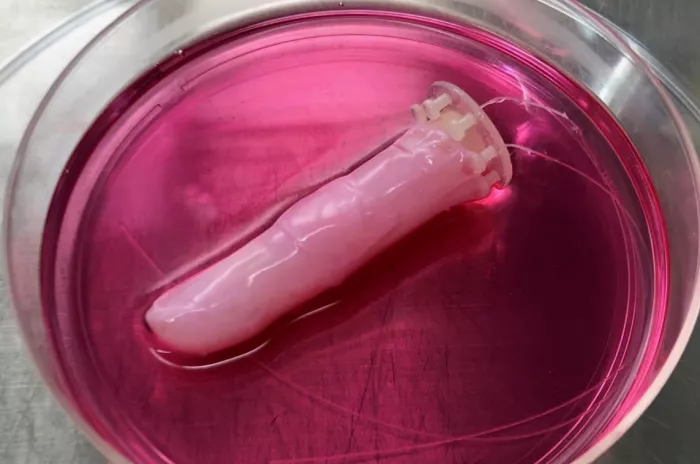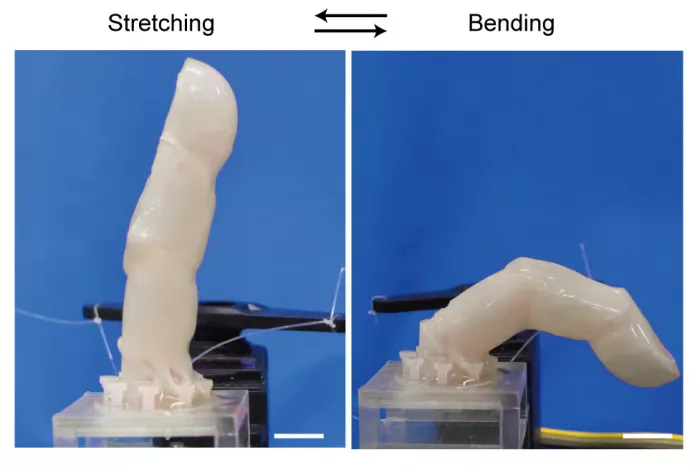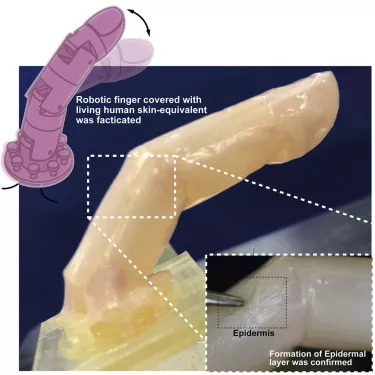According to new atlas, we have heard a lot about synthetic skin designed for robot hands, which will make these devices more human like. Now, Japanese scientists have taken another step forward, covering a robot finger with self-healing skin made of living human cells**

Under the leadership of Professor Shoji Takeuchi, a team from the University of Tokyo first built an articulated robot finger driven by a motor, which can bend and straighten like human fingers. The finger was then immersed in a cylinder filled with a solution of collagen and human dermal fibroblasts, the main components of our skin's connective tissue.
Due to its natural properties, the solution shrinks and conforms to the contour of the finger, forming a seamless hydrogel coating. Next, the scientists added a layer of human epidermal keratinocytes, which make up 90% of our epidermis (the outermost layer of the skin). These cells form a moisture / water barrier at the top of the gel and give the fingers a more natural texture.

In subsequent tests of the robotic devices, the researchers found that the skin had enough strength and elasticity to be able to bend and stretch with the fingers without breaking. More importantly, when the skin is cut and then covered with collagen bandage, the bandage begins to gradually deform into the surrounding skin, thus healing the wound.
Nevertheless, engineered skin is still much weaker than natural human skin, and it must constantly provide nutrients to survive. Scientists plan to address these shortcomings and add features such as nails, sweat glands, hair follicles, and even sensory neurons that provide touch.
It is hoped that this skin can eventually be used to make humanoid robots more lifelike and more friendly to humans. This technique will also be ideal for performing tasks that require gentle and flexible touch, and conducting skin research without resorting to animal testing.

Takeuchi said, "we are surprised at the degree of fit between the skin tissue and the robot surface, but this work is only the first step towards creating a robot covered with living skin (...) I think living skin is the ultimate solution for robots to have biological appearance and touch, because it is the same as the material that covers the animal's body. "
The paper on this project was recently published in matter 00239-9).